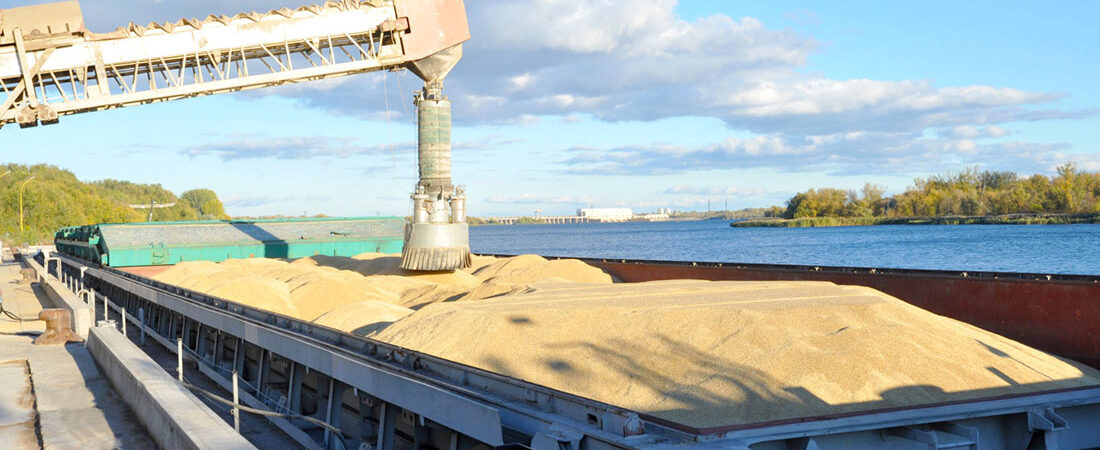Australia: more gains amid tight road freight

Short covering by exporters and consumers has pushed up prices for all quoted grains in the past week amid limited grower selling.
Barley and sorghum have posted the strongest gains, with the supply of no. 1 grade sorghum for export tight following rain earlier this month, and barley in strong demand from feedlots and export accumulators.
Damage to rail lines caused by torrential near Sydney is still being rectified, and the flow of bulk grain to Port Kembla by rail is not expected to return to capacity for another 10-14 days.
This is further upping the call for road transport, and has shifted a portion of demand to other ports in the interim.
| Today | Mar 17 | |
| Barley Downs | $350 | $340 |
| SFW wheat Downs | $372 | $370 |
| Sorghum Downs | $355 | $342 |
| Barley Melbourne | $380 | $372 |
| ASW wheat Melbourne | $400 | $395 |
| SFW wheat Melbourne | $397 | $388 |
Table 1: Indicative delivered prices in Australian dollars per tonne.
South Australian domestic and export buyers are pulling barley and SFW-type wheat from as far away as southern Queensland and north-central New South Wales, which is forcing up bids from northern stockfeed millers.
They seem largely to be caught between the vortex of the SA market, and bids into Newcastle and Brisbane on the eastern side.
“Barley is hard to find locally; there are only scraps left on the Downs now, and if you want it in Queensland, you have to get from down around Moree,” one trader said.
SFW-type wheat with higher specs, such as a falling number of 250 or more, is getting around $40/t more than parcels with more sprouting, and making it into grades like AUH2.
The sorghum harvest is progressing, but rain forecast into next week for most growing areas is expected to slow or stop activity.
Growers are showing limited interest in selling sorghum with some sprouting caused by rain at harvest, with the downgraded market nominally at $25-$40/t under top grade.
Further putting pressure on northern logistics is the impending closure of the rail line which carries bulk grain from north of Narrabri to the Port of Newcastle.
This Narrabri North-Moree line will close April 1-September 30 to allow upgrades needed for the Inland Rail project, and will reopen in time for the 2022 winter-crop harvest.
Logistics remains the key issue for southern markets, as direct-to-port road deliveries for Australia’s record export program make available road-freight capacity hard to find in the near term.
“There’s still extraordinary demand for export, and logistics is the biggest issue,” one trader said.
Transport operators everywhere are railing at the high cost of diesel, and are looking for shorter hops where possible.
Emerald trader Richard Woods said grower selling of barley was thin, and more liquidity was being seen in the wheat market.
“They’re hanging on to barley,” Mr Woods said of growers.
Indications are that export covering will tail off in the next few weeks, and some pent-up domestic demand could well be seen in late April
“The export guys need to round out the last hatch or two, and that’s dragged a few domestic consumers who are short through with them.
“The export shorts have been hoovering up all the tonnes.”
Port Kembla, NSW, has two export grain terminals, and both rail paths servicing them were closed March 7-16 because of rain damage.
One has since reopened, and the other is scheduled to open by April 10, which will enable wheat and canola stocks at port to be replenished ahead of the fully booked shipping program over coming months.
Read also
Wheat in Southern Brazil Impacted by Dry Weather and Frosts
Oilseed Industry. Leaders and Strategies in the Times of a Great Change
Black Sea & Danube Region: Oilseed and Vegoil Markets Within Ongoing Transfor...
Serbia. The drought will cause extremely high losses for farmers this year
2023/24 Safrinha Corn in Brazil 91% Harvested
Write to us
Our manager will contact you soon



